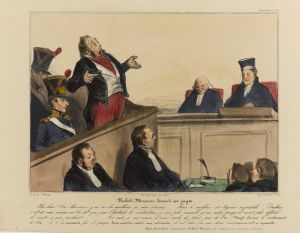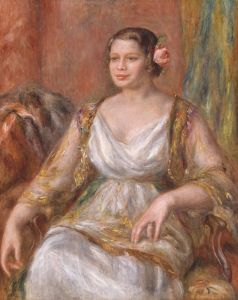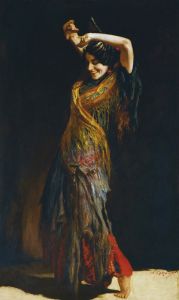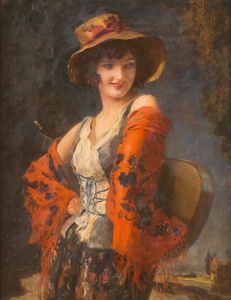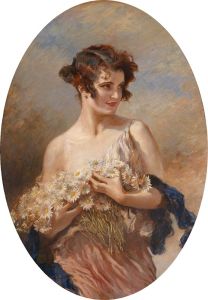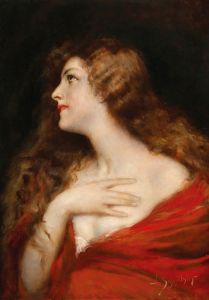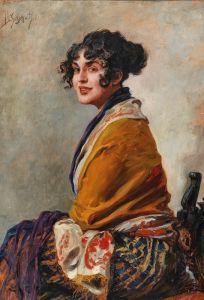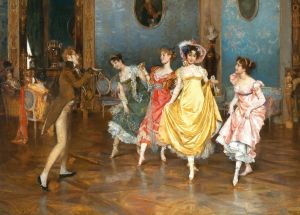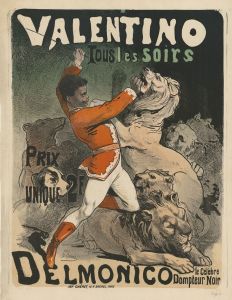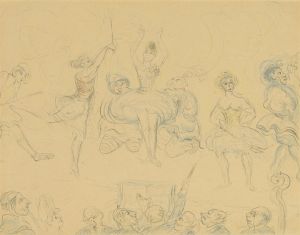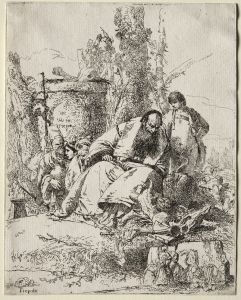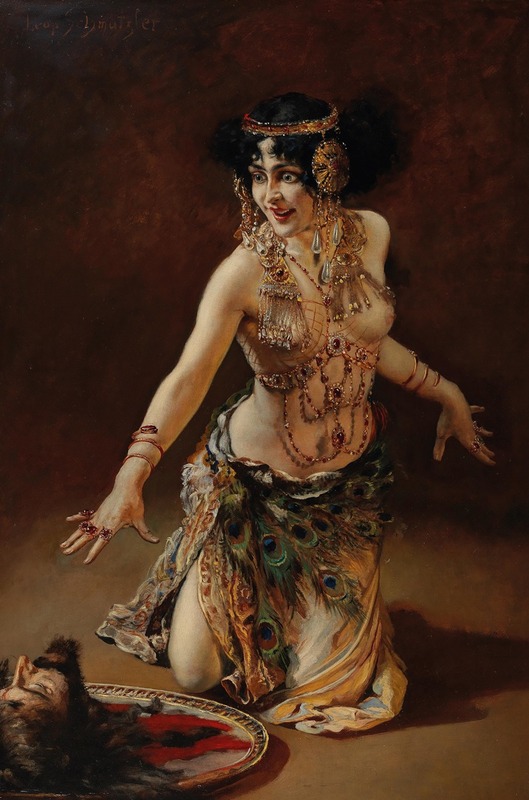
Lili Marberg as Salome
A hand-painted replica of Leopold Schmutzler’s masterpiece Lili Marberg as Salome, meticulously crafted by professional artists to capture the true essence of the original. Each piece is created with museum-quality canvas and rare mineral pigments, carefully painted by experienced artists with delicate brushstrokes and rich, layered colors to perfectly recreate the texture of the original artwork. Unlike machine-printed reproductions, this hand-painted version brings the painting to life, infused with the artist’s emotions and skill in every stroke. Whether for personal collection or home decoration, it instantly elevates the artistic atmosphere of any space.
Lili Marberg as Salome is a painting by the German artist Leopold Schmutzler, created in the early 20th century. The artwork depicts Austrian actress Lili Marberg in the role of Salome, a character from the biblical story of John the Baptist, which became widely popular in the late 19th and early 20th centuries due to its adaptation in literature, theater, and opera. The painting is an example of Schmutzler's skill in portraiture and his ability to capture theatrical and dramatic subjects.
Leopold Schmutzler (1864–1940) was a German painter known for his portraits and genre scenes, often characterized by their detailed realism and vibrant use of color. He was particularly active during the late 19th and early 20th centuries, and his works often reflected the cultural and artistic trends of the time. Schmutzler's style was influenced by academic painting traditions, but he also incorporated elements of Art Nouveau and Symbolism in some of his works.
Lili Marberg (1876–1962) was a prominent Austrian stage actress, celebrated for her performances in both classical and modern roles. She gained fame for her portrayal of Salome, a role that demanded a combination of dramatic intensity and sensuality. Salome became a significant cultural figure during this period, particularly after the publication of Oscar Wilde's play "Salome" in 1891 and Richard Strauss's opera adaptation in 1905. Marberg's interpretation of the character contributed to her reputation as a daring and talented performer.
The painting captures Marberg in a moment of theatrical intensity, likely inspired by her performance as Salome. The composition emphasizes her expressive pose and costume, which reflect the exotic and decadent aesthetic often associated with the character. Schmutzler's attention to detail and use of rich colors enhance the dramatic effect of the scene.
While the exact date of the painting's creation is not documented, it is believed to have been produced during the height of Marberg's career, which coincided with Schmutzler's most active period as an artist. The painting serves as both a portrait of a celebrated actress and a representation of the cultural fascination with the character of Salome during the early 20th century.
The current location of the painting and its provenance are not widely documented, and further details about its history remain unclear. However, it stands as a testament to the collaboration between visual art and performance, capturing a moment in time when theater and painting intersected to celebrate iconic characters and performers.






